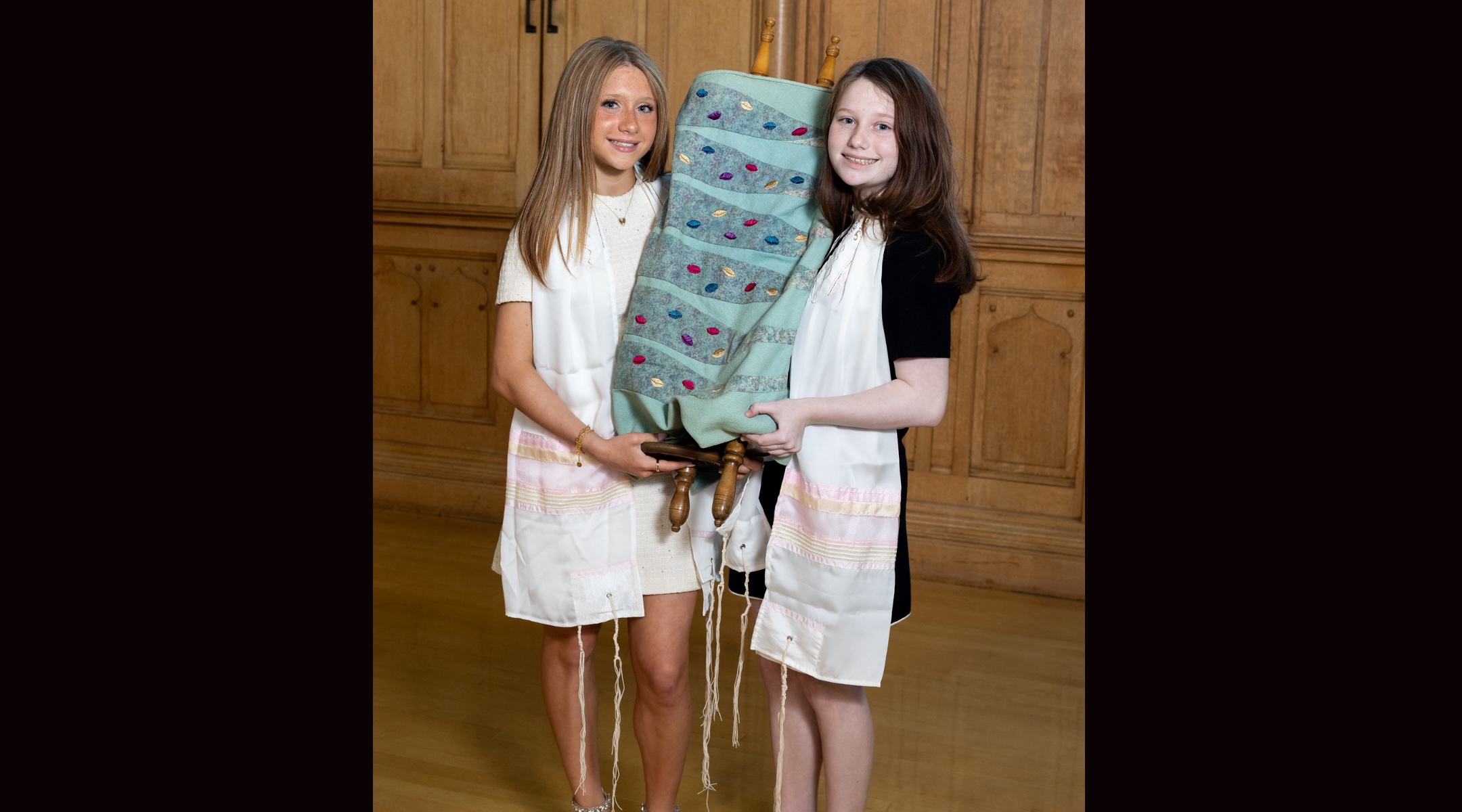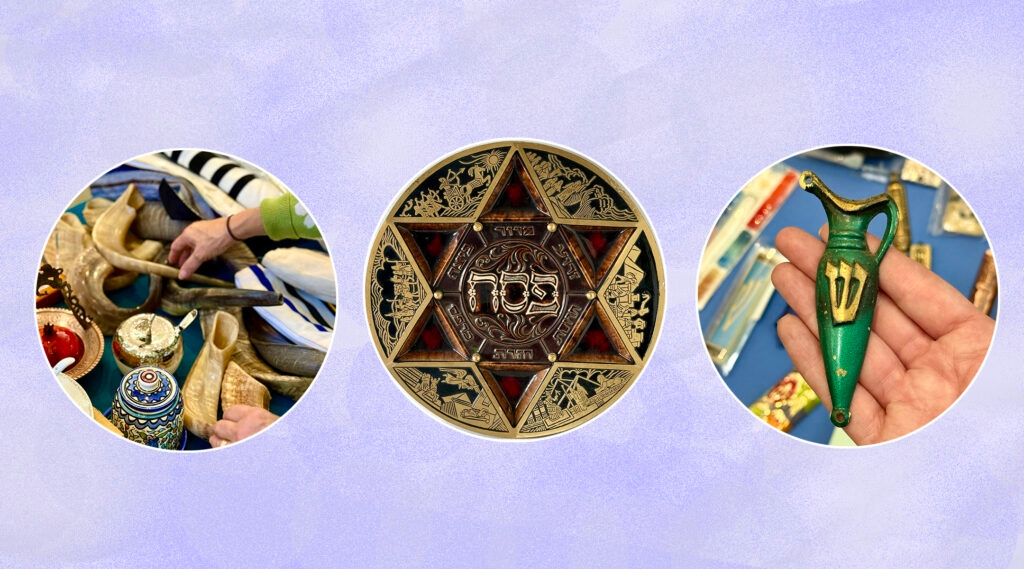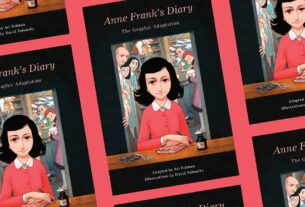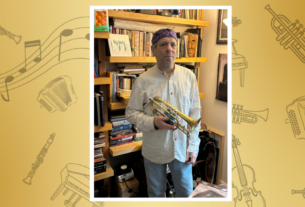LOS ANGELES — While the L.A. wildfires were still smoldering in January, I sat down to write a personal reflection on what Judaica means to the heart of Jewish homes like the ones that had been consumed in the inferno. Before I had written the last sentence, I knew I wanted to try to help those families replace what they had lost.
Little did I know that I was about to embark on a journey that would put my life on hold and turn my home into a makeshift distribution center, filled to the brim with boxes upon boxes of bubble-wrapped menorahs and seder plates sent from all over. I had managed to help start a Judaica collection and distribution team with some like-minded partners. A mere two months later, despite knowing next to nothing about organizing donation drives and mass volunteer efforts, our upstart team of volunteers succeeded in our mission: last month we distributed over 5,000 used and new Judaica items to more than 400 Jews impacted by the Palisades and Eaton fires. And we’re not quite finished yet.
Along the way, I’ve gotten an up-close look at what fire-impacted L.A.-area Jews want, when it comes to Judaica, and which items their peers around the city and the country are willing to part with. We collected sizable donations of brand-new items from Judaica companies, but the bulk of donations came from hundreds of individual Jews and dozens of synagogue-run collection drives in Jewish communities from far-flung states.
We asked them for great-condition, display-worthy objects, used or new. What we got, however, was a breathtaking, kaleidoscopic array of relics spanning at least a century of American Jewry. Not all of it was in giftable condition, and we quickly developed discerning eyes for quality that paid off when we finally displayed our haul at distribution events.
Here’s a look at some of what we gathered, and how it was received, by the numbers:
Roughly $6,000: The amount spent just on shipping costs to Los Angeles by donors across the U.S. and Israel who collected items on our behalf. We received packages from places like Alaska, Montana, Maine and Texas, and a motherlode from the Washington, D.C. area.
Seven: The number of green brass mid-century “Made in Israel” oil jug-motif knickknacks collected, ranging in size from 3 inches to nearly 3 feet long. Many donees dig the vintage verdigris Israeli style, and we received it by the hundreds in the form of wall hangings, seder plates, Hanukkah menorahs and more.
Among the items donated to a Judaica drive for L.A. fire victims was a pair of tzitzit worn by a German Jewish child immigrant in the early 20th century. (Courtesy of Rachel Steinhardt)
224: Permanently stained challah covers we received and ultimately discarded (some were repurposed). These beautiful items are hard for Jews to throw away, and we presumed that our collection drive offered the satisfaction of imagining a possible future for them.
Four: Bottles of silver polish we used to return dozens of tarnished heirloom-quality candlesticks, kiddush cups and other once-prized possessions to dazzling glory.
20%: The proportion of all donated items that consisted of Hanukkah decor (platters, mugs banners, cookie jars, etc.). American Jews have over-invested in decorating for the Festival of Lights and were eager to offload. Interestingly, these items were not the most wished-for among our recipients.
19: Pieces of classic gold and cream floral ceramic Lenox Judaica received, including seder plates, menorahs, kiddush cups, candlesticks and mezuzahs. The style is iconic to many American Jews, and the seder plate is a replica of a 19th-century plate in the Jewish Museum in New York.
Six: Tissue boxes used by emotional recipients at our distribution events. Tears of joy, grief, nostalgia, astonishment and overwhelming gratitude.
One dozen: Precious silver Yeled Tov and Yalda Tovah baby cups with tiny handles.
Three: Priceless pure-silver mezuzahs made by Holocaust survivor and master silversmith Henryk Winograd (1917-2008), each donated from a family in a different state.
One pair: Of matching pink gossamer-silk tallitot, sourced from our collection in the nick of time for a set of Bat Mitzvah twins who had lost their home.

Kehillat Israel members Ava and Addison Rich, who lost their home in the Palisades Fire, wear matching tallitot received during a Judaica donation drive. (Courtesy Rachel Steinhardt)
One: Bat mitzvah girl from Pennsylvania, who, as her “Mitzvah Project,” rallied her community to collect four boxes’ worth of items to ship to us.
At least four: Synagogue gift shops, nearly liquidated of inventory for our cause.
11: Stories shared with us by fire-impacted recipients about the vintage objects they found in our collection that matched specific family heirlooms and gifts from loved ones they lost to the flames (and in some cases, had already sifted through ash to find remnants of). Some were predictable: a standard-issue menorah, a popular seder plate design. Others less so: an intricately beaded blue-and-white mezuzah case, a miniature ceramic house with “Shalom” over the door, an artisanal hand-glazed Havdalah set.
Six: Items that are likely over 100 years old, currently being examined by antiques experts because they should probably be in museum collections. These include an ornate Moroccan shofar, a patinated wrought iron etrog case, and the tzitzit of a German Jewish child who immigrated to the United States before World War I.
600+: Tote bags full of Judaica, filled and carried out of our distribution events by fire-affected families. Some people who lost their homes only took an item or two, white others loaded multiple bags in an attempt to bring a sense of Jewish normalcy to their environments. “I don’t have a front door yet,” one woman whispered to me at an event while she selected several mezuzahs. “But I will.” An elderly man and a young boy — unrelated to each other but united in their loss — browsed, touched and sorted objects for hours on end. It helped.
Many fire victims confessed to me that they could’ve ordered brand new Judaica items to place on their mantels or in their display cabinets, but that there was something ineffable they could only get from the pre-owned objects we had laid out on dozens of tables in a synagogue social hall. Based on the thick stack of notes on my desk that accompanied many of the donations inside their bubble-wrapped boxes, that quality is the personal touch emanating from a Jewish home.
It’s the little bit of hope and mazel imbued in each passed-on kiddush cup, from one Jewish family to another. Its the love and connection that keeps us bound as a people: usually gifting from one generation to the next, but sometimes from the next state, or even zip code, over.
Keep Jewish Stories in Focus.
(JR) has documented Jewish history in real-time for over a century. Keep our journalism strong by joining us in supporting independent, award-winning reporting.

covered technology and Jewish topics as a journalist for over a decade and now leads a corporate research team. She runs the Instagram account @yidlitkidlet where she shares Jewish children’s books and kid-friendly Yiddishkeit.
The views and opinions expressed in this article are those of the author and do not necessarily reflect the views of (JR) or its parent company, 70 Faces Media.




